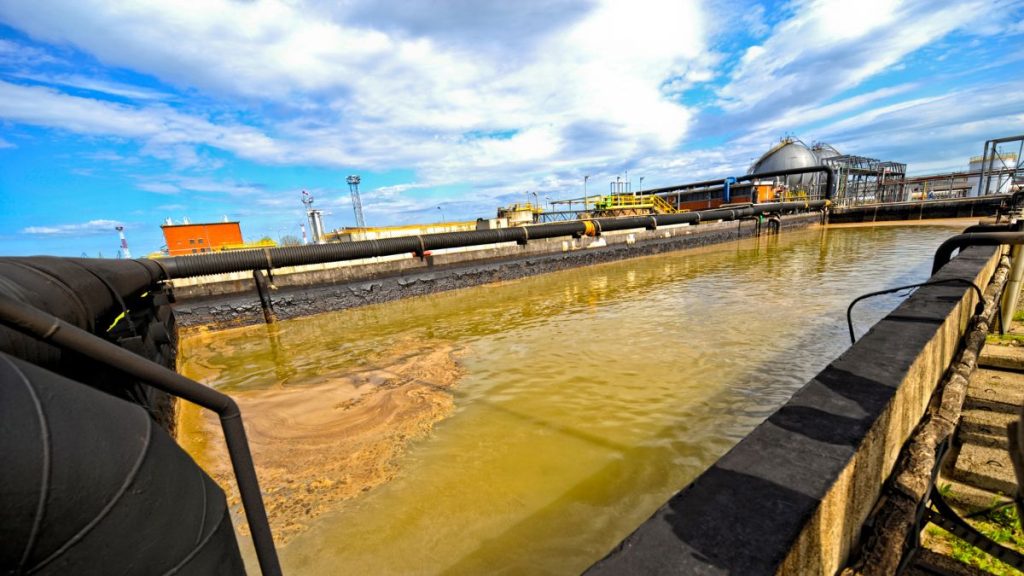Wastewater from domestic, agricultural, and industrial sources often carries excess nutrients that, if left untreated, can cause severe harm to the environment. Removing nutrients in wastewater is therefore a critical step in modern water treatment, ensuring that effluents discharged into rivers, lakes, or oceans do not disrupt aquatic ecosystems or pose risks to human health.
What Nutrients Are Commonly Found in Wastewater?
Nutrients in wastewater primarily refer to compounds containing nitrogen and phosphorus, though organic matter also plays a role in nutrient pollution. These substances may originate from households, agriculture, food processing, and various industrial activities. Let’s break them down:
1. Nitrogen Compounds
- Ammonia (NH₃/NH₄⁺): Found in domestic sewage, fertilizers, and industrial effluents. High levels are toxic to fish and aquatic organisms.
- Nitrate (NO₃⁻): A highly soluble compound that can contaminate groundwater, causing issues such as blue baby syndrome (methemoglobinemia) in infants.
- Nitrite (NO₂⁻): Less stable but more toxic than nitrate, formed as an intermediate during the nitrogen cycle.
- Organic Nitrogen: Derived from proteins, urea, and other nitrogen-containing compounds in domestic and industrial wastewater.
2. Phosphorus Compounds
- Orthophosphates (PO₄³⁻): Common in detergents, fertilizers, and food industry effluents. Easily absorbed by plants and algae.
- Polyphosphates: Often used in industrial cleaners, which hydrolyze into orthophosphates in water.
- Organic Phosphorus: Present in biological waste, food residues, and sewage.
Read Also: The Importance of Phosphorus Removal in Wastewater Treatment
3. Other Nutrients Contributing to Eutrophication
While nitrogen and phosphorus are the primary concerns, other elements such as potassium, calcium, and organic carbon can also contribute to the growth of algae and microorganisms when present in excess.
Why Is Removing Nutrients in Wastewater Important?
Unchecked nutrient discharge leads to eutrophication, a process where excess nutrients stimulate rapid algae growth. The consequences include:
- Algal Blooms: These reduce light penetration, harming aquatic plants and lowering oxygen levels.
- Hypoxia (Oxygen Depletion): When algae die and decompose, dissolved oxygen decreases, suffocating fish and aquatic organisms.
- Toxin Release: Certain algae produce harmful toxins, endangering human and animal health.
- Water Quality Degradation: High nutrient levels make water unsafe for drinking, recreation, and industrial use.
- Regulatory Non-Compliance: Many countries set strict discharge standards for nitrogen and phosphorus to protect the environment.
Therefore, advanced and reliable wastewater treatment technologies are essential to address these issues.
How to Remove Nutrients in Wastewater?
There are multiple approaches to removing nutrients in wastewater, ranging from biological processes to chemical treatments and advanced filtration. The choice depends on wastewater composition, treatment goals, and environmental regulations.
1. Biological Nutrient Removal (BNR)
BNR is the most widely adopted method due to its cost-effectiveness and sustainability. It uses microorganisms to convert nitrogen and phosphorus into harmless forms.
1. Nitrification and Denitrification:
- Nitrification converts ammonia into nitrite and then nitrate through aerobic bacteria.
- Denitrification reduces nitrate into nitrogen gas under anoxic conditions, which then escapes harmlessly into the atmosphere.
2. Enhanced Biological Phosphorus Removal (EBPR):
Specialized bacteria called polyphosphate-accumulating organisms (PAOs) take up phosphorus and store it inside their cells, which is then removed as excess sludge.
2. Chemical Treatment
Chemical precipitation is a reliable method when biological treatment alone cannot achieve required phosphorus limits.
1. Phosphorus Removal Using Chemicals:
- Aluminum salts (alum, aluminum chloride) and iron salts (ferric chloride, ferric sulfate) react with phosphates to form insoluble precipitates.
- Lime (Ca(OH)₂) can also be used to precipitate phosphorus as calcium phosphate.
2. Ammonia Stripping:
Ammonia can be removed by raising pH and aerating wastewater, causing ammonia gas to volatilize.
3. Breakpoint Chlorination:
Involves adding chlorine to oxidize ammonia into nitrogen gas, though it requires precise control.
3. Membrane Filtration Technologies
For industries requiring very low nutrient levels in effluent, advanced filtration is used:
- Ultrafiltration (UF): Removes suspended solids and some organic matter.
- Nanofiltration (NF) and Reverse Osmosis (RO): Effective in removing dissolved nitrogen, phosphorus, and other contaminants, producing high-quality effluent suitable for reuse.
4. Constructed Wetlands and Natural Systems
For smaller-scale or decentralized applications, constructed wetlands use plants and natural microbial activity to remove nutrients. These systems are sustainable but require large land areas.
5. Integrated Multi-Stage Treatment
In practice, a combination of biological, chemical, and physical methods is often used to meet strict discharge standards. For example, BNR followed by chemical polishing ensures maximum nutrient removal.
Read Also: High Solid Content Effluent: Causes, Impacts, and Solutions
How Lautan Air Indonesia Supports Nutrient Removal
At Lautan Air Indonesia, we understand that removing nutrients in wastewater requires tailored solutions. We provide support through reliable treatment systems, quality chemicals, advanced filtration technologies, and ongoing operation & maintenance services. Our team also offers laboratory monitoring and sustainability programs to help clients achieve compliance while optimizing efficiency.
Contact Lautan Air Indonesia today to learn how we can help you with nutrient removal in wastewater treatment.



